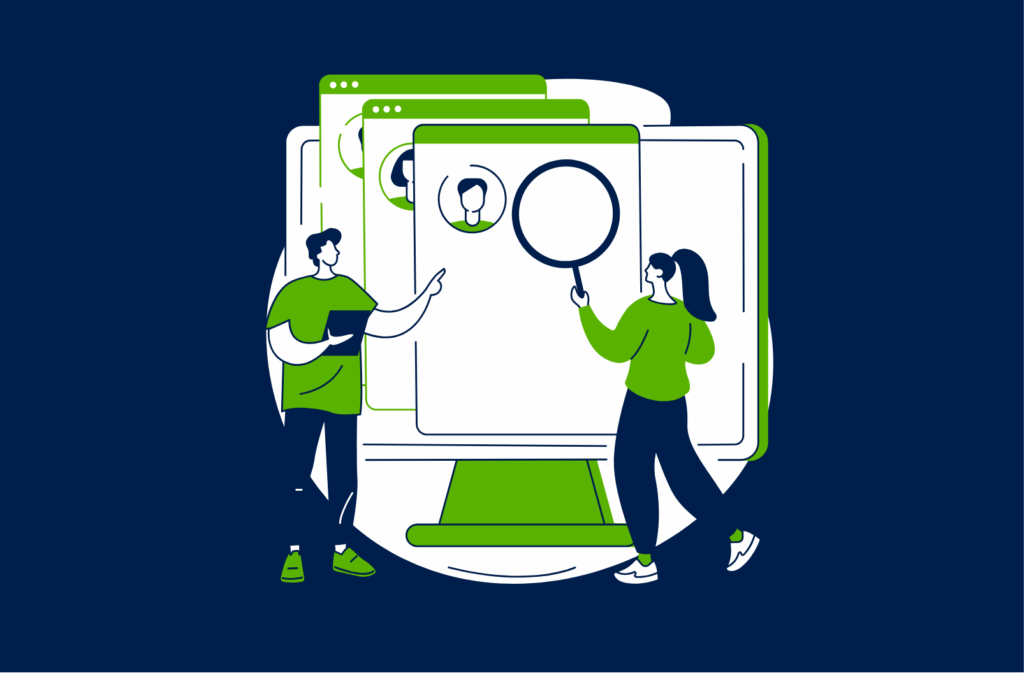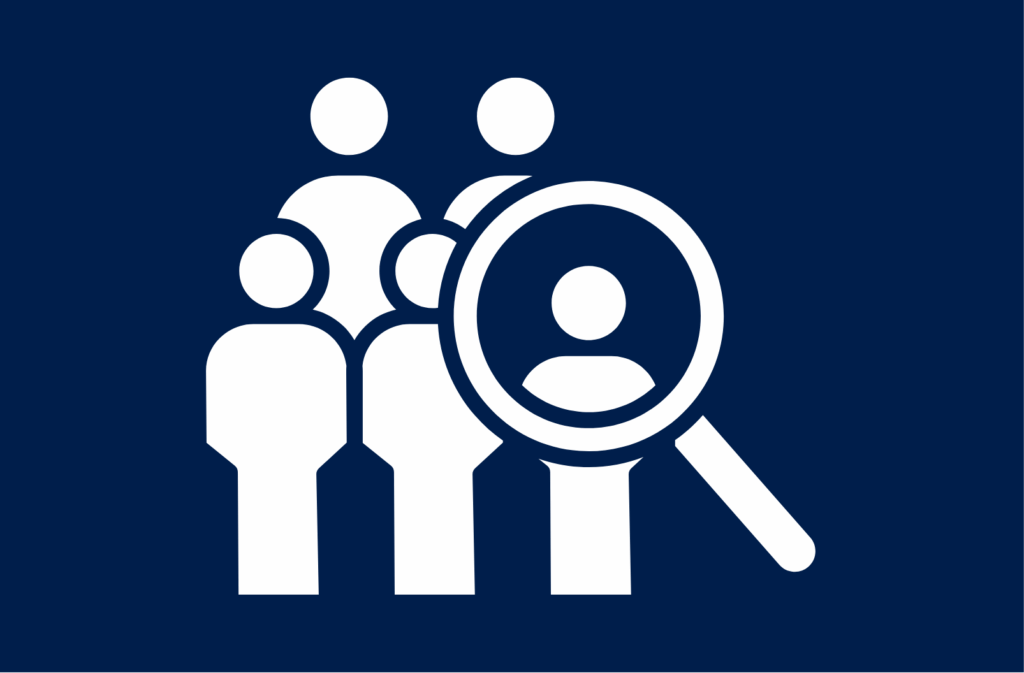With time-to-hire increasing across the industry, many organizations are facing IT hiring bottlenecks. For hiring leaders and executives, that means delayed projects, increased costs, over-worked teams, and the risk of losing top candidates before you even get to offer stage.
These delays don’t have to be permanent. Many of the biggest bottlenecks are process problems, not talent shortages. With the right focus and alignment, you can clear them in about 30 days, boosting hiring speed and team momentum.
We’re walking you through the three biggest IT hiring bottlenecks, showing their impact, and sharing a concrete 30-day action plan to eliminate them.
What Do We Mean by IT Hiring Bottlenecks?
In the context of technical recruiting, IT hiring bottlenecks occur when misalignment, slow decisions, or weak sourcing pipelines cause time-to-fill to stretch and candidate quality to drop.
With that foundation, let’s break down the three biggest IT hiring bottlenecks affecting teams today.

Bottleneck #1: Unclear role definition & intake
Why this IT hiring bottleneck happens
This is one of the most common, and most costly, issues in technical hiring. When hiring managers and recruiters are not fully aligned on what success in the role truly looks like, confusion drags through every stage of the process.
Generic job descriptions, unclear expectations, and unrealistic requirements can derail sourcing, frustrate candidates, and lead to late-stage rejections.
Impact on metrics
- Candidates are screened and rejected late because of mismatch in expectations.
- Too many unqualified candidates entering the pipeline
- Late-stage “We actually need something different” conversations
- Poor candidate experience due to unclear expectations
Unclear job requirements plus too many approval layers are key sources of delay, losing top candidates in the process.
30-Day Elimination Plan
Week 1: Hold a true intake session
Bring hiring managers and recruiters together for a structured conversation. Align on:
- The role’s mission and business impact
- 3–5 outcomes expected in the first 90 days
- Required vs. “nice-to-have” skills
- Working model and non-negotiables
Week 2: Rewrite the job description
- Rewrite the job description to reflect clarity: mission, 3-5 key outcomes, required vs nice-to-haves, working model, team context.
- Share it with hiring manager + recruiter for sign-off before posting/sourcing.
Week 3: Build a sourcing brief
- Create a sourcing brief: target profile, channels, quick screening criteria. Recruiter and HM must agree.
Week 4: Standardize the first-screen process
- Launch sourcing. Introduce a first-screen checklist for recruiters: confirm must-haves upfront (e.g., tech stack, availability, working model) before forwarding to the hiring manager.
- Set a 48-hour turnaround goal for the hiring manager to review sourced candidates or provide feedback.
- By aligning early and clearly you reduce wasted interviews, late rejections, and time-drag caused by mis-match.
Bottleneck #2: Slow interview & decision process
Why this IT hiring bottleneck happens
Many technical teams unintentionally create overly complex interview workflows with multiple rounds, too many stakeholders, inconsistent interviewer training, and long gaps between steps.
This slows everything down and gives candidates time to drop out or accept offers from faster-moving competitors.
Impact on metrics
- Time-to-fill drifts upward.
- Candidate drop-off and ghosting increase.
- Offer-acceptance rates decrease as candidates accept from faster competitors.
30-Day Elimination Plan
Week 1: Map your current workflow
- Map your current interview workflow: count rounds, average lag time between each, decision-making delays.
- Identify the longest gap (e.g., scheduling, feedback, decision).
Week 2: Reduce and simplify
Limit the process to three stages whenever possible:
- Recruiter or HM screen
- Technical assessment
- Final decision conversation
Set a 48-hour decision window after the final round.
Week 3: Train and align interviewers
- Create interviewer guides: scorecards tied to key outcomes, consistency across interviews, interviewer training (especially for tech roles).
- Draft a “candidate communication” template: timeline explanation, next steps, who they’ll speak with.
Week 4: Tighten scheduling & feedback loops
- Use a simple feedback template
- Hold a weekly “hiring sync” to review pipeline and decisions
- Implement scheduling automation (calendar links, blocked interviewing slots) and assign recruiter to monitor feedback deadlines.
By simplifying rounds, reducing lag and improving communication, you can significantly shrink process time and capture better talent.

Bottleneck #3: Limited pipeline
Why this IT hiring bottleneck happens
Even with 100% process alignment, if you aren’t sourcing proactively and strategically, you’ll hit a bottleneck: poor candidate flow, low quality, long waits.
Tech roles are highly specialized, and traditional sourcing channels don’t always reach the right people.
If you’re relying too heavily on job boards, or waiting for inbound applicants, you’ll likely experience long delays.
Impact on metrics
- Jobs remain open for extended periods, stretching team resources and time.
- Cost-per-hire increases as recruiters spend more time and effort to find fewer viable candidates.
- Quality of hire may drop as urgency leads to compromise on fit.
30-Day Elimination Plan
Week 1: Audit your sourcing channels
- Audit your sourcing channels over the past 6 months: list channels used, candidate volume per channel, qualified candidates per channel.
- Identify which channels delivered the best quality and which under-perform.
Week 2: Expand into new channels
- Identify 2-3 alternative channels focused on your niche: e.g., targeted tech communities, coding boot-camp graduates, alumni networks, passive candidate sourcing.
- Develop outreach messaging tailored to these segments (“Here’s what our engineering team is building…”).
Week 3: Build a passive-talent pool
- Launch a passive-candidate “talent pool” campaign: recruiter identifies potential fits, sends outreach, and begins engagement (even if no immediate role).
- Encourage hiring managers and existing employees to tap their network/referrals and elevate internal mobility.
Week 4: Strengthen employer visibility
- Execute a mini employer-branding boost for this pipeline: highlight open-source contributions, latest tech stack, engineering culture, flexibility (on LinkedIn, blog post, micro-videos).
- Measure early results: number of engaged potential candidates, interview-ready profiles, cost/time per sourced candidate.
- By proactively building the funnel and diversifying your sourcing, you’ll reduce dependency on one channel and shrink the “time-to-qualified-candidate” metric.
Monitoring & Measuring Success
To ensure your 30-day sprint produces results, track the following KPIs weekly and compare against your baseline:
- Time-to-fill or Time-to-hire (application → offer)
- Stage-to-stage drop-off rates (especially screen → interview, interview → offer)
- Candidate satisfaction/candidate-experience feedback (e.g., via simple NPS)
- Offer-acceptance rate
- Quality-of-hire (e.g., first-90-day performance, turnover)
Every organization faces IT hiring bottlenecks, but they don’t have to become long-term obstacles. By aligning early on role expectations, simplifying your interview process, and strengthening your sourcing strategy, you can dramatically improve both hiring speed and candidate quality. These changes don’t require a major overhaul. They just require intention, clarity, and consistency. Put the 30-day plans into action, and you’ll build a hiring engine that moves faster, supports your team more effectively, and consistently brings in the technical talent you need to grow. If you’re ready to reduce bottlenecks and elevate your IT hiring process, now is the perfect time to start.







